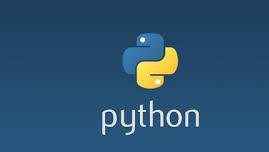Python File Handling
What is File?
The file is a collection of data used in almost all programming languages.
Why File Handling?
To handle large amounts of data to be stored in computer memory for future reference.
What are Modes of File?
w = Write / create file
a = append / add to data to existing file
r = read / display information from file.
In python, both text and binary data can read and write.
The following are examples of File Handling in Python.
# File handling in python – Creating file and writing to file
file=open(‘D:\PythonExa\mytext.txt’, ‘w’)
file.write(“This is text is being inserted in text file”)
file.close()
print(“File created successfully!”)
OUTPUT:File created successfully!
#Python File Handling – Storing numbers in File and Displaying using Loop.
for x in range(11):
with open(‘nump.txt’, ‘a’) as f:
f.write(‘%d’ %x)
print(x)
print(‘Done!’)
with open(‘nump.txt’, ‘r+’) as f:
print(f.read())
OUTPUT:012345678910Done!012345678910
# File handling in python – Appending file
file=open(‘D:\PythonExa\mytext.txt’, ‘a’)
file.write(” 12345678 Another line of text is being inserted in text file”)
file.close()
print(“Data Added to File Successfully!”)
OUTPUT:Data Added to File Successfully!
#File handling in python – Reading data from a file
with open(“D:\PythonExa\mytext.txt”) as file:
data = file.read()
# show data using print command
print(data)
OUTPUT:This is text is being inserted in text file 12345678 Another line of text is being inserted in the text file
# Program to show various ways to read and write data in a file.
file1 = open(“mtext.txt”,”w”)
string = [“This is Web \n”,”This is Data \n”,”This is AI \n”]
# \n is placed to indicate EOL (End of Line)
file1.write(“Hello \n”)
file1.writelines(string)
file1.close() #to change file access modes
file1 = open(“mtext.txt”,”r+”)
print (“Output of Read function is “)
print (file1.read())
print()
# seek(n) takes the file handle to the nth bite from the beginning.
file1.seek(0)
print (“Output of Readline function is “)
print (file1.readline())
print()
file1.seek(0)
# readlines function
print (“Output of Readlines function is “)
print (file1.readlines())
print()
file1.close()
OUTPUT:Output of Read function isHelloThis is WebThis is DataThis is AIOutput of Readline function isHelloOutput of Readlines function is[‘Hello \n’, ‘This is Web \n’, ‘This is Data \n’, ‘This is AI \n’]
#Store Name and Age using File handling in python – Appending file
file=open(‘D:\PythonExa\std_det.txt’, ‘a’)
nm=input(‘Enter name:’)
ag=input(‘Age:’)
file.write(nm)
file.write(‘\t’)
file.write(ag)
file.close()
file=open(‘D:\PythonExa\std_det.txt’, ‘r+’)
print(file.readline(), end=’\n’)
file.close()
OUTPUT:Enter name:SharanAge:21shivaaa 21Ganesh 21Sharan 21
#Looping – printing series
print(“Series – 1”)
for i in range(1, 5):
for j in range(i):
print(‘*’, end=’ ‘)
print()
print(“Series – 2”)
for i in range(1, 5):
for j in range(i):
print(i, end=’ ‘)
print()
print(“Series – 3”)
for i in range(1, 5):
for j in range(i):
print(i+j, end=’ ‘)
print()
OUTPUT:Series – 1** ** * ** * * *Series – 212 23 3 34 4 4 4Series – 312 33 4 54 5 6 7



